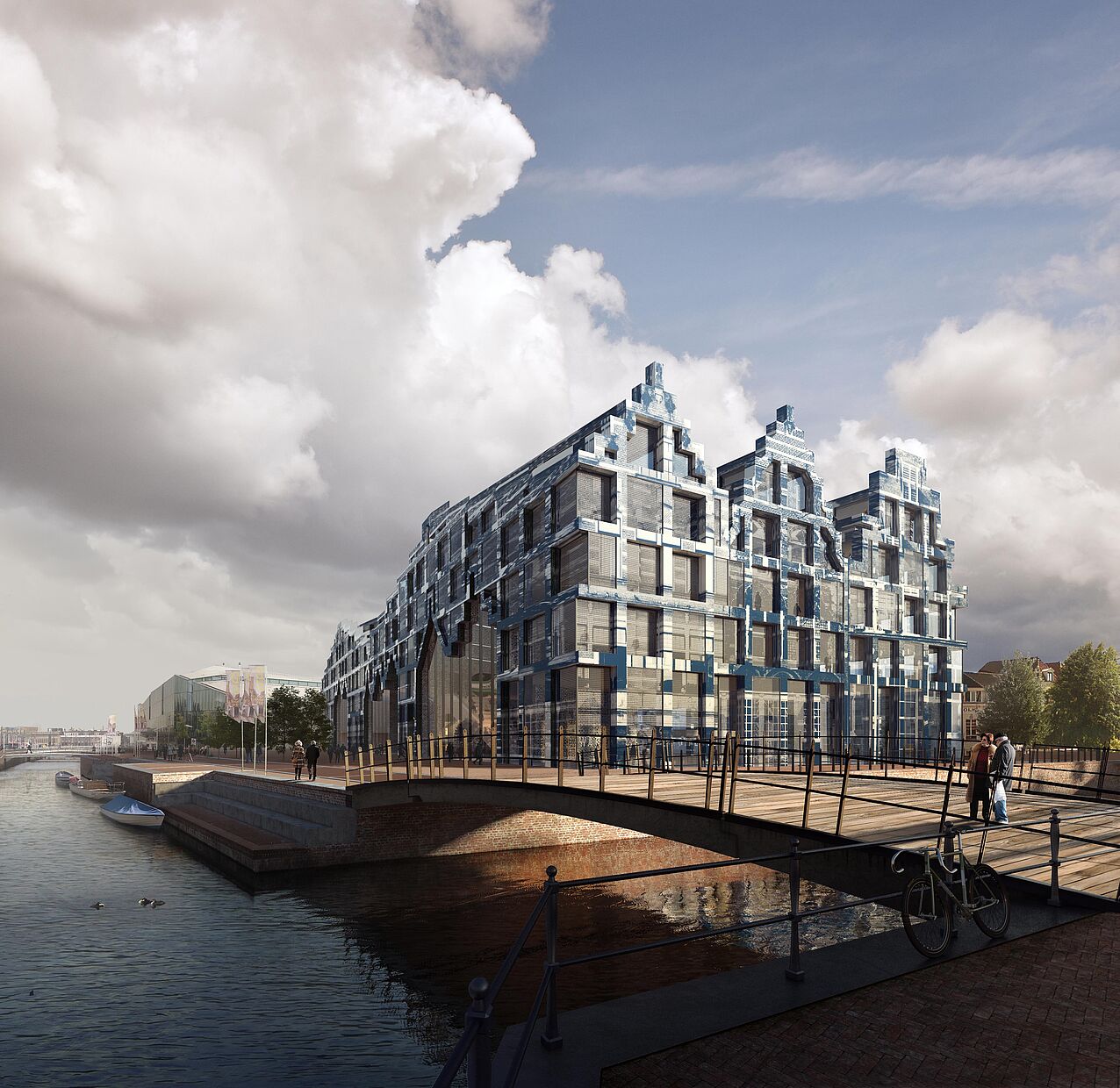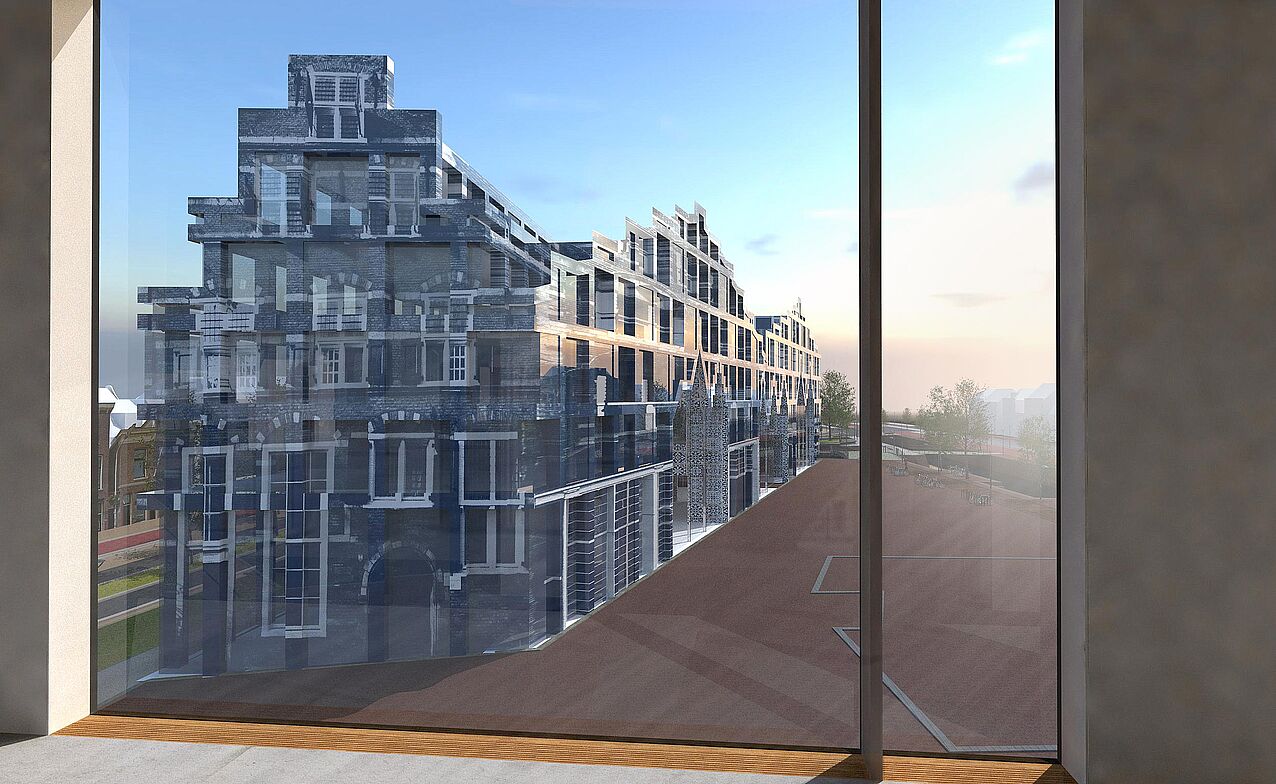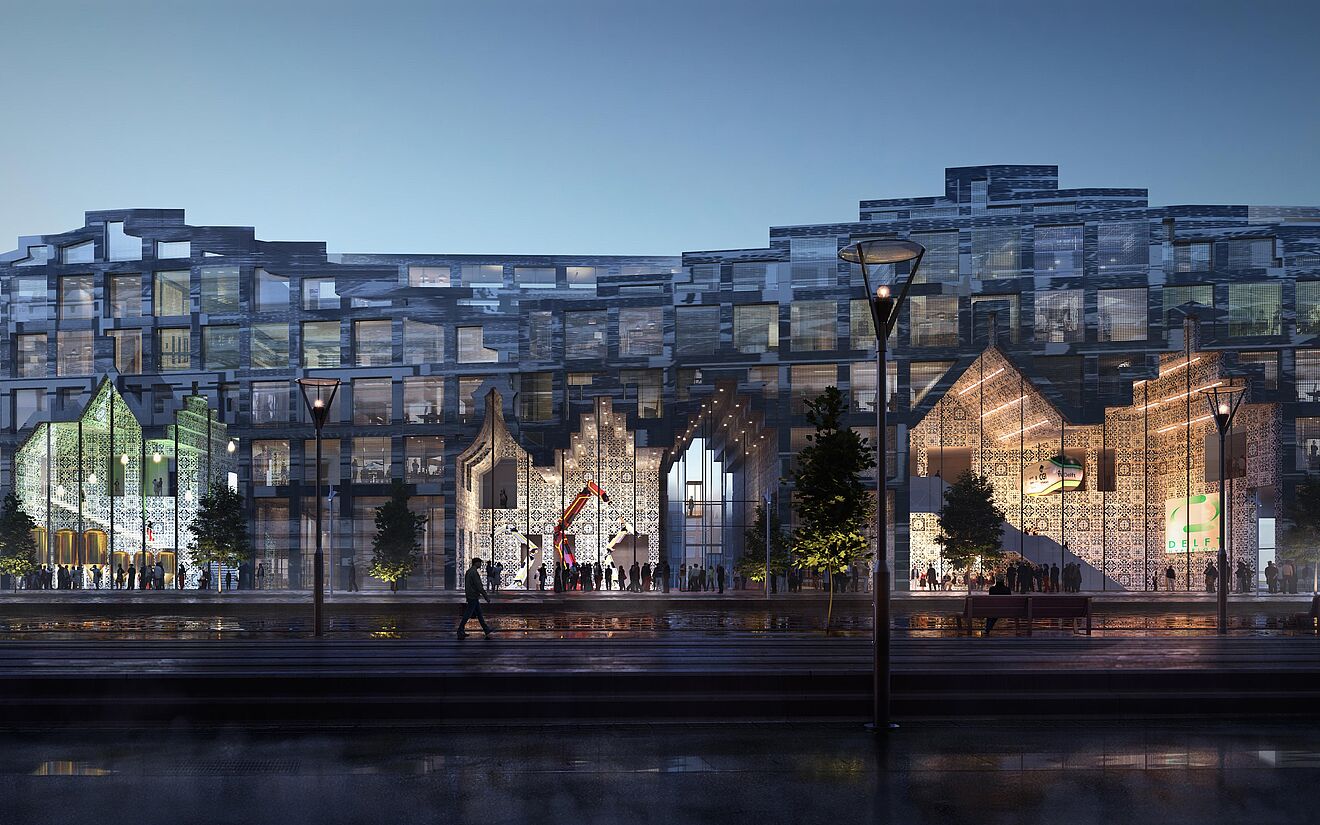Normally people speak of a building steeped in history when a building is particularly old and therefore has already "seen a lot." Or it is a locality that has played a significant role in certain historical events. However, there are also buildings that are "steeped in history" in a very different way, namely they literally embody history. One example of this particular type of building is the House of Delft. This will not only unite externally modern interpretations of historical homes of local pioneers, but also provide space for pioneers of the future.

Delft is a great city that has brought about so many enigmatic personalities. The list of historical innovators, for example, includes names such as Hugo Grotius, the "father of international law," or Antoni van Leeuwenhoek, the inventor of the microscope. House of Delft is an ode to such local pioneers whose stories form the architectural foundation of the building so to speak. Thus, the house honors its extraordinary achievements in crafts, science, art and technology by taking up and re-interpreting ten facades of historical houses, once inhabited by some of Delft's pioneers. These ten different facades tell the stories of these heroes, how they lived and how they worked.
"Historical" facades
At its narrow end, House of Delft adopts the 20 meter protruding form of three houses. These are associated with the pioneer of the Dutch East India Company Jan Joost van Lodesteyn, the aforementioned Hugo Grotius and the navigator Piet Hein. On the long side, the building presents a triptych consisting of two groups of two and one group of three that depicts the silhouettes of seven other "houses" in a glass facade.

On the left are the doctors with the home of Antoni van Leeuwenhoek and the theater, where anatomists like Reinier de Graaf experimented. The arts and crafts group in the middle is made of the Delft Bible (the first printed book in Dutch), the house from the painting "The Little Street" by Jan Vermeer and the shop De Porceleyne Fles (The Porcelain Bottle). The right group is dedicated to the founders of the Netherlands and Delft and shows the nunnery Saint Agatha, where the Prince of Orange lived, and the Koningsveld nunnery, built in 1271 by the virgin Ricardis, a founder of Delft.
Not (only) from yesterday
However, the House of Delft is not just about glorifying a golden past. The building is also supposed to offer apartments and workshops for knowledge workers who for their part wish to create something as historic as possible against the background of historical achievements. You will then be able to observe these new pioneers behind the glass facade while living and working, as if in a shop window. In this way, Delft promotes and celebrates itself as a historical and current location for crafts, science, art and technology. And of course in a prominent location: The House of Delft will be the first thing travelers will see when they arrive at the main Delft train station.

The design for the representative building is not quite finished. However, the layouts are to be presented in the first half of this year. All new pioneers are then of course cordially invited to this presentation to contribute fresh ideas to this project when it opens its doors in 2020.




